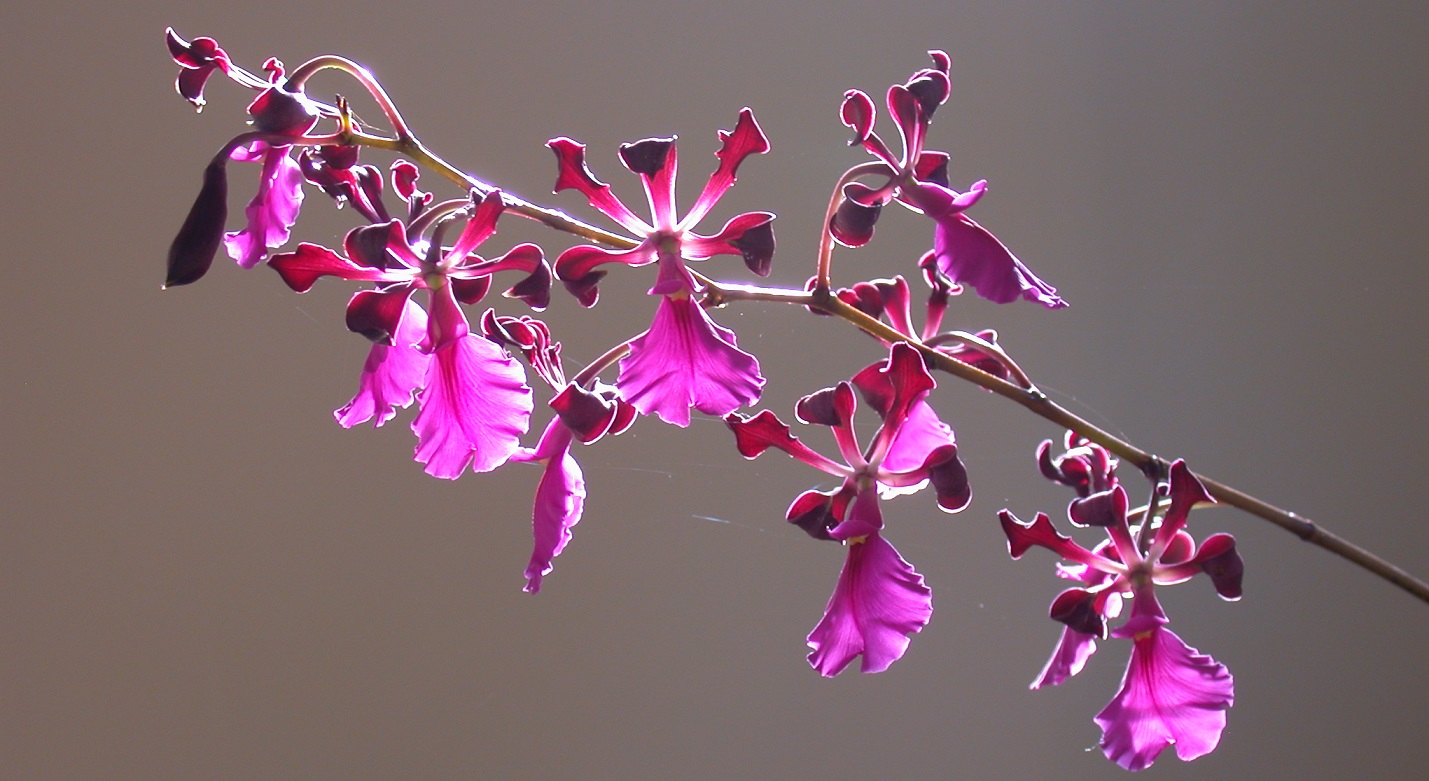
Winter, and the subsequent slowdown in garden activity, has given me the opportunity to dig through old photos and think about a more detailed series of posts than I usually write. This series on the orchid genus Encyclia was adapted from a talk that I gave to the Triangle Orchid Society and other local North Carolina orchid societies. I’m currently planning to break it into five or six parts, to be posted over the next few weeks. Apart from this introduction, I will focus on specific plants from three main regions of Encyclia biodiversity and then conclude with a post on Encyclia hybrids.
Introduction
Encyclia is a genus of neotropical orchids whose natural range extends from Florida to Argentina. There seem to be three main regions of Encyclia biodiversity: the Caribbean islands, Mexico and Central America, and the Brazilian shield south of the Amazon basin. Encyclias are characterized by heteroblastic pseudobulbs (see below) which are often tightly clustered, 1-3 strap-like leaves which may be leathery or rigid, and flowers with the lip not fused to the column (unlike Epidendrum, in which Encyclia species were previously classified).
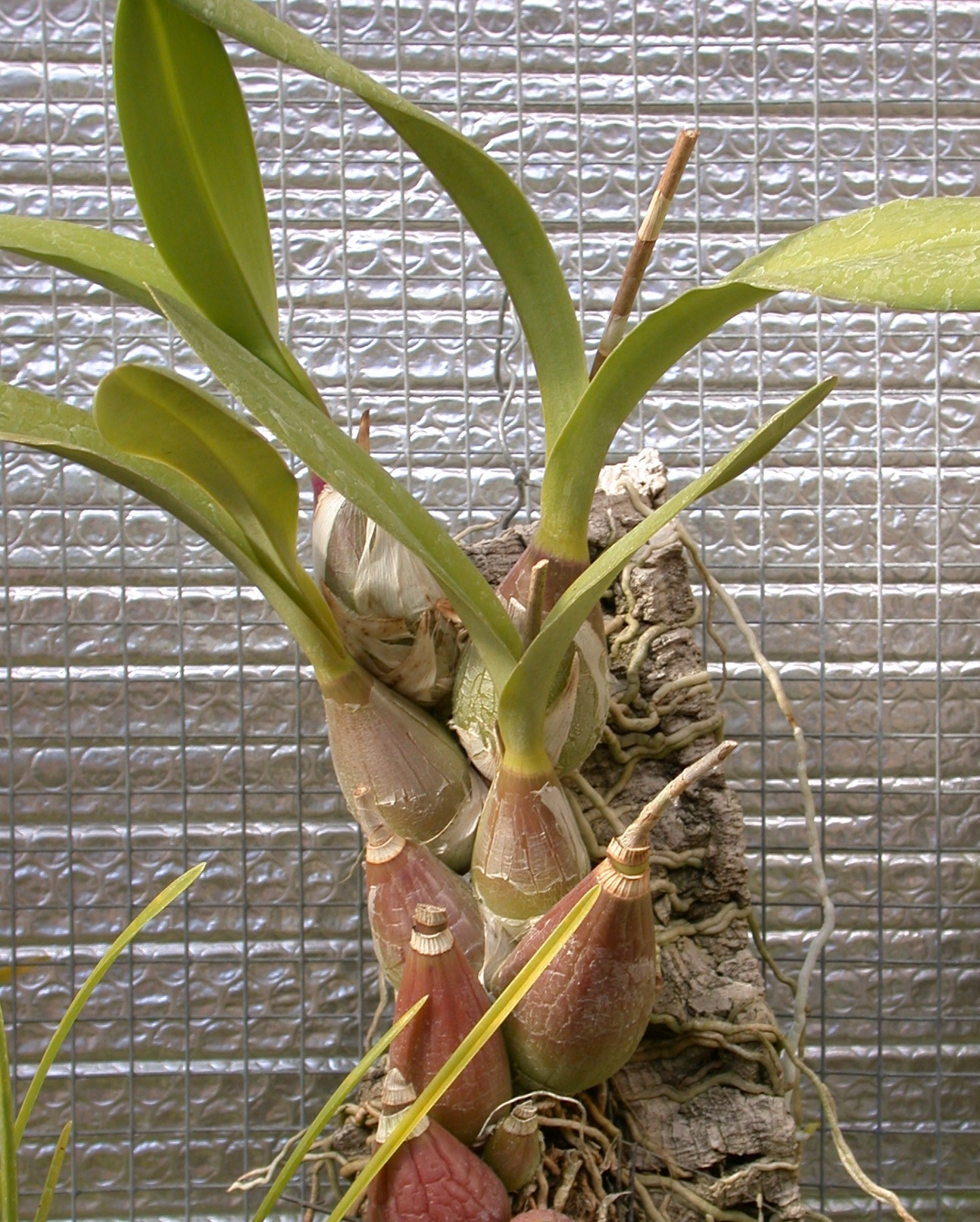
Encyclia flowers are generally borne on long, upright inflorescences which are sometimes branched. They are usually pollinated by bees and are often strongly fragrant with colors in various shades of white, purple, and yellow. Apart from the flowers, the pseudobulbs of Encyclia plants are probably their best feature. Heteroblastic simply means that the pseudobulb is formed from two or more stem segments of unequal size, and since Encyclias often grow under quite harsh conditions, the water-storing pseudobulbs are often large (up to the size of a large hen’s egg) and glossy. A well-grown Encyclia plant in flower gives an impression of both toughness and elegance.
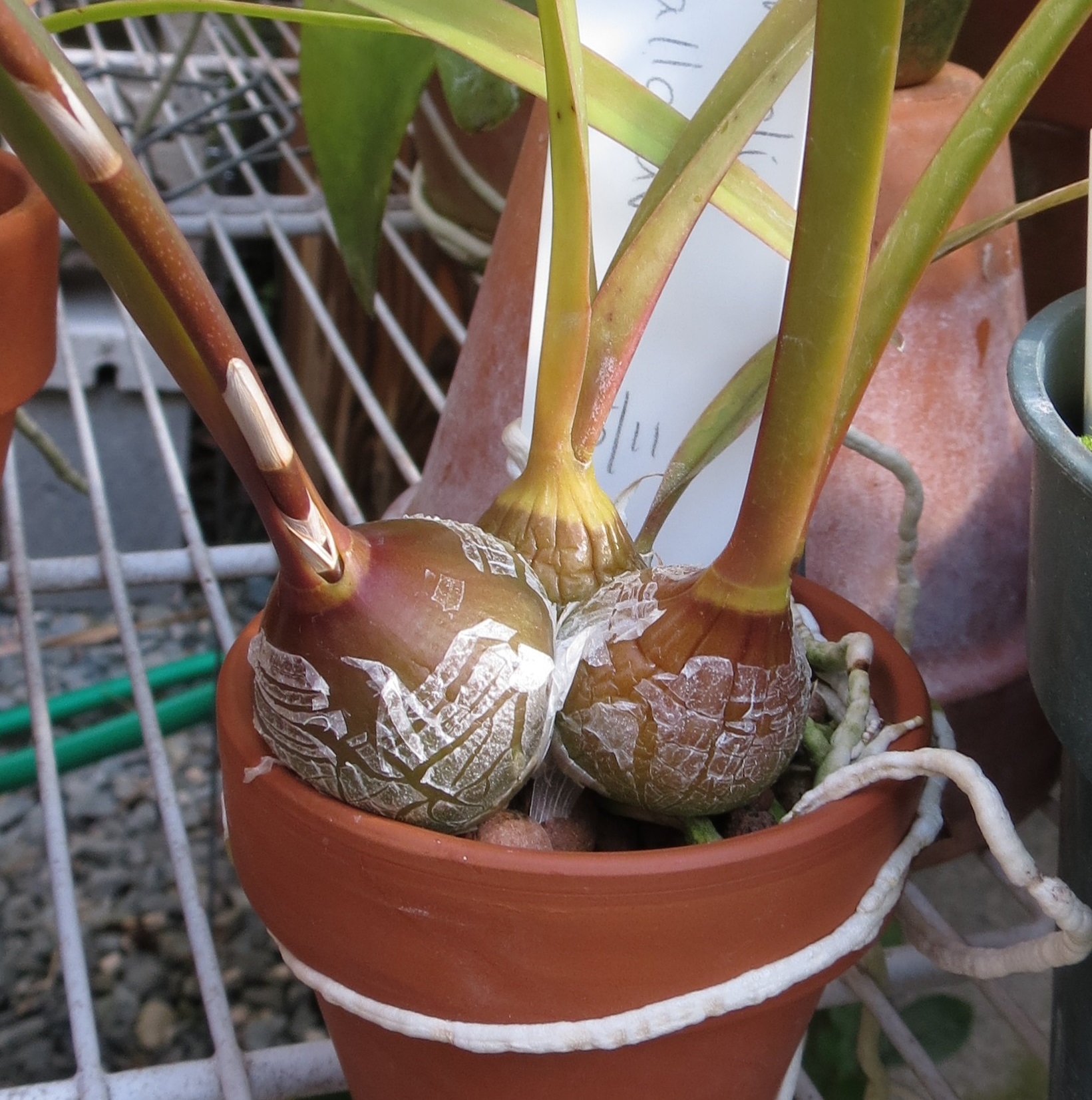
General cultivation notes
The following constitutes instructions for successfully growing most Encyclia species. When considering specific species in later posts, I’ll make note when a plant’s growing requirements differ from these instructions.
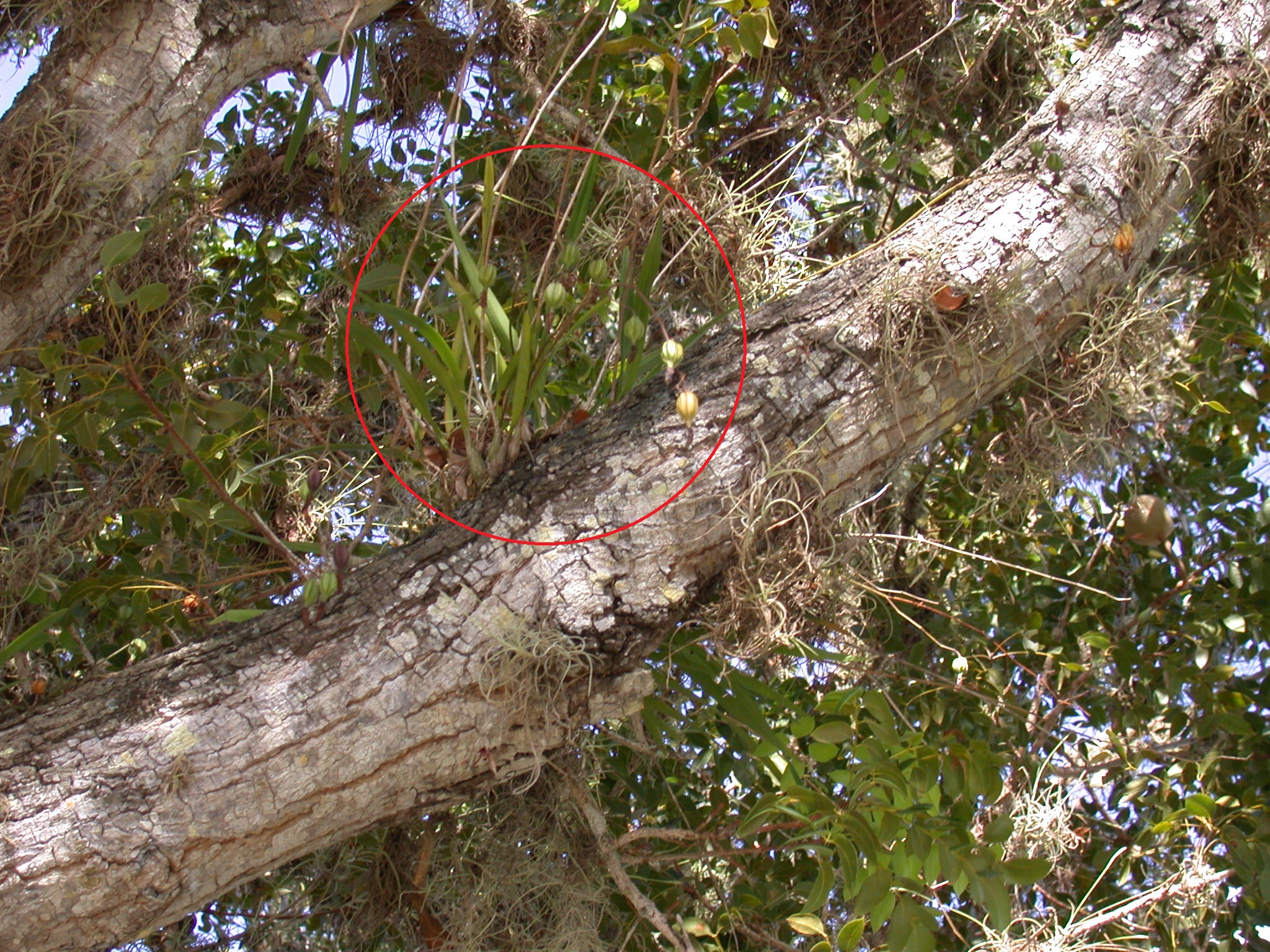
Encyclias typically grow as epiphytes or lithophytes, often in exposed situations, at low to moderate altitudes. Consequently, they do best when grown in free-draining media under bright light (though generally not full sun) and with plenty of air movement. Indoors, try growing plants on a south-facing windowsill and/or close to artificial lights. Consider putting plants outdoors in summer. In my greenhouse, I have found that the light diffusion offered by 8 mm twin-wall polycarbonate and a thin layer of dirt is sufficient for most species, without need for additional shade cloth.
Potting media should be open and long lasting. A combination of bark chunks and coarse perlite is the most common traditional choice, but other inorganic components (gravel, stalite, aliflor, scoria, etc) can also be helpful. In my greenhouse, plants do very well in pure scoria (red lava rock), although salt buildup may be a problem in areas with hard water.
Many Encyclia species are adapted to intermittent or seasonal drought, so allow the pot to dry almost completely before re-watering. I find plants easier to manage in terracotta pots than in plastic pots, because rotting roots are the inevitable consequence when potting mix stays wet for too long. Plants can also be grown in plastic or hardwood baskets, or mounted on cork or hardwood. Treefern mounts often stay too wet.
Repot when you see new root growth, not when you see new pseudobulb growth. In some species, roots are produced on immature pseudobulbs, but others root on mature pseudobulbs shortly before flowering. Encyclia cordigera, for instance, initiates new pseudobulb growth in late spring, has a dormant period when the pseudobulb is mature, and finally produces new roots in late winter/early spring shortly before flowering. If you repot E. cordigera in spring and damage the existing roots, the new growth will struggle for almost a year before forming new roots.
Pests and Diseases
Apart from rots associated with cold and overwatering, Encyclia plants are generally free of diseases. They are susceptible to insect pests, though. Aphids, mealybugs, and soft brown scale can badly damage inflorescences, but they will not usually kill a plant. They can be controlled without damaging tender flower buds by spraying with horticultural soaps. Bees can be pests when plants are grown outside, because they will efficiently pollinate all the flowers on your favorite plant. The pollinated flowers rapidly fade and lose their fragrance. To avoid this problem, move flowering plants indoors or enjoy them on a screened porch.
The worst enemy of cultivated Encyclia is boisduval scale (Diaspis boisduvalii). An untreated infestation of this species will disfigure and eventually kill most Encyclia plants. These scale insects are common in commercial nurseries that grow orchids with hard pseudobulbs, particularly Cattleya and related orchids like Encyclia, and even when growers have an active control program it is difficult to entirely exterminate the little pests. Great care should be taken when introducing new plants to your collection. Be very suspicious of plants with yellow patches on their foliage, and closely examine the undersides of leaves for fluffy clusters of males. Peel off the dry, papery bracts on old pseudobulbs to make sure that scale aren’t hiding underneath.
In a small collection, it may be possible to control boisduval scale by spraying with relatively innocuous substances (horticultural soap, oils, 70% isopropyl alcohol, etc), but repeated spraying will be required to achieve control. Wipe down leaves after spraying to dislodge the female shells that protect eggs. In a large greenhouse, the big guns (i.e. systemic pesticides) will probably be required.
True confession: I failed to control a boisduval scale infestation in my collection. Ten years ago, my orchid collection was about 80% Cattleya and Encyclia species, including some very unusual and beautiful plants. Boisduval scale got into the collection, probably through a plant purchased on eBay, and I hesitated to use systemic pesticides. We had young children, and my greenhouse is close to our vegetable garden. With my professional background in genetics and neurobiology I am aware of the limitations of safety testing and sensitive to the possibility of subtle developmental and neurological effects in humans exposed to pesticides that target the insect nervous system. Since orchids are a hobby, not my profession, I decided that I would rather cull badly infested plants and grow something else than rely on highly toxic pesticides. Today, there is not a single surviving Cattleya in my collection, but I still grow a handful of Encyclia species. Some have survived multiple scale infestations controlled by frequent spraying with 70% isopropanol and/or insecticidal soap. Surprisingly, a few species have remained completely untouched by the scale insects, even when grown alongside–or even touching–infested plants.
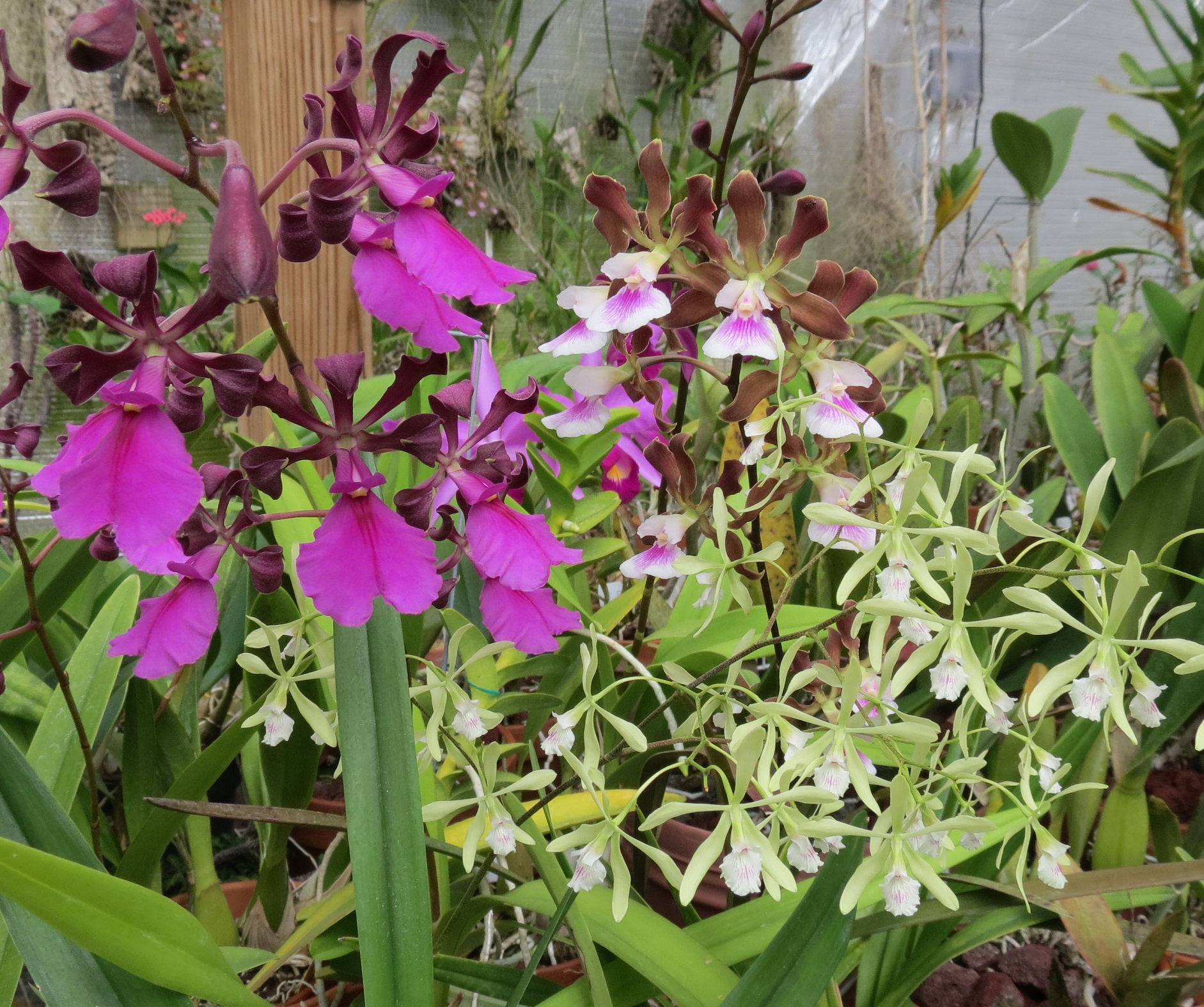
But enough gloom and doom. Hopefully you will never see boisduval scale on your plants.
Up next: some beautiful Caribbean Encyclia species.

4 thoughts on “The Genus Encyclia–Part 1, Introduction and general notes on cultivation”